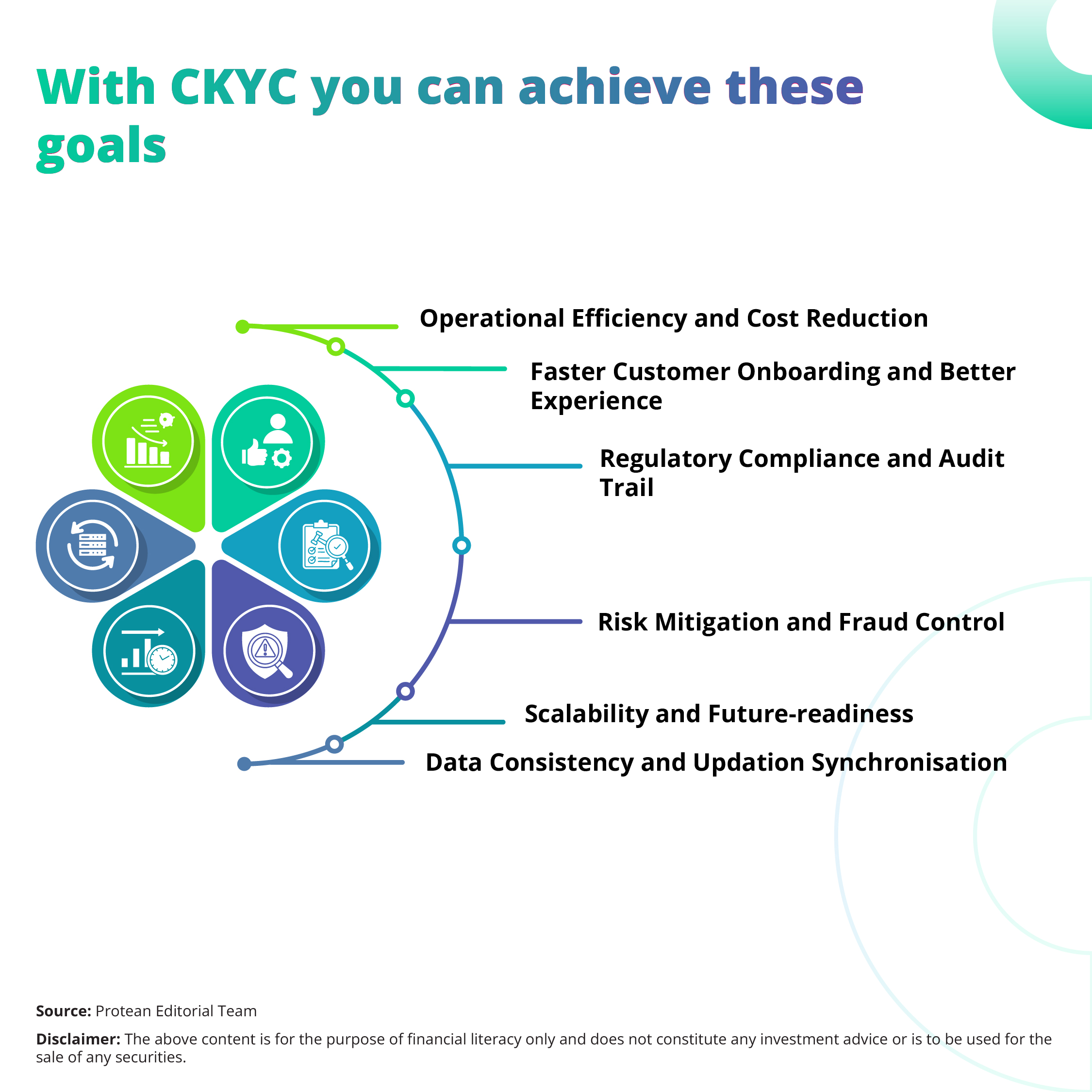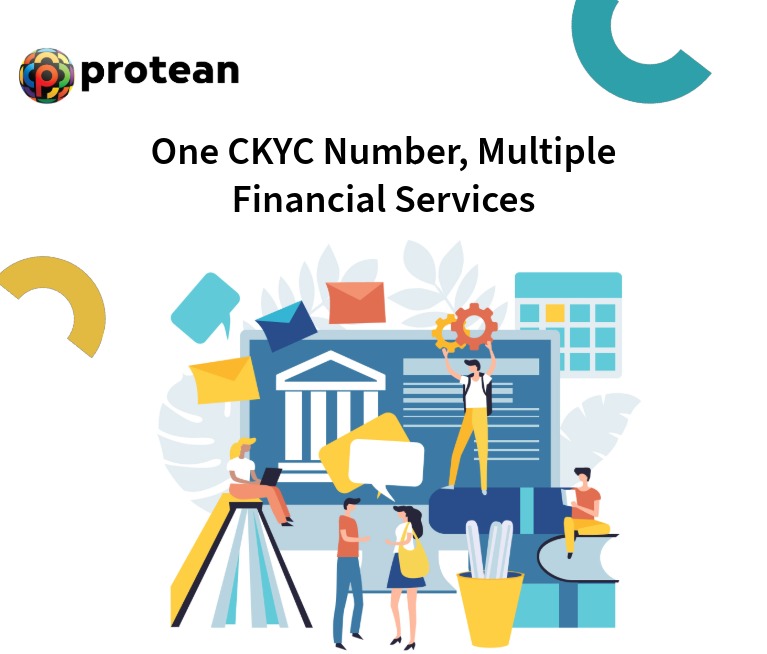Why does your business need a CKYC strategy? If you are a business in the financial domain, you might be aware of the importance of a CKYC number in simplifying the onboarding process.
Here’s more about CKYC, CKYC number and the CKYC portal.
Let us discuss the strategic imperatives for adopting CKYC, the role of the CKYC portal and the APIs used in operationalising it.
The Evolution of KYC: From a Burden to an Advantage
Historically, every bank, mutual fund, insurer or pension provider collected the same identity and address proofs repeatedly from customers. This led to the risk of duplication. The then KYC measures were inefficient, costly, and error-prone.
Over time, regulators advocated shared KYC utilities and central registries to reduce duplication and friction. What was once a cost center is now emerging as a strategic tool and by centralising KYC data, institutions can streamline onboarding, improve customer experience, and strengthen compliance controls.
What is CKYC and Why is the CKYC Number a Strategic Asset?
CKYC is a centralised registry of KYC records maintained by Central Registry of Securitisation Asset Reconstruction and Security Interest of India (CERSAI). It acts as the Central KYC Records Registry (CKYCR).
Under the Prevention of Money Laundering Rules, regulated entities (REs) are required to upload customer KYC data to CKYCR. When a new customer completes KYC, the CKYCR issues a unique 14-digit KYC Identifier (often called the CKYC number or KIN).
The CKYC number can enable any participating financial institution to retrieve a verified copy of the customer’s identity and address information without asking the customer to resubmit the same documents.
Its benefits are as follows:
- Reduction in friction
- Time saving
- Cost-effective for operations
It has created a uniform, auditable trail of which institutions accessed the record. This has added transparency and accountability.
In recent times, the CKYC system is being strengthened.
From May 2025, any retrieval of a CKYC record by a regulated entity must be accompanied by OTP-based consent from the customer via their registered mobile number. This change can enhance consent control and prevent silent access of personal data.
Also, as per a July 2025 news release, the finance ministry has proposed revamping CKYC norms to:
- Standardise e-KYC across financial regulators
- Reduce repeated document requests
- Enhance portability of KYC data across sectors
Thus, the CKYC number is not just an identifier. The CKYC portal is a foundational element in a modern, consent-oriented identity verification ecosystem.
The Strategic Imperatives for a CKYC Strategy

The following are the strategic results of CKYC:
Operational Efficiency and Cost Reduction
Repeated document collection is tedious, error-prone, and expensive (document scanning, storage, manual review). With a CKYC strategy, a regulated entity can directly fetch validated KYC data to eliminate duplication. This can yield lower processing times, fewer back-and-forths, and reduced risk of human error.
Faster Customer Onboarding and Better Experience
For customers, using their CKYC number means they need not submit multiple sets of proofs for each new financial product. This seamless onboarding can become a competitive differentiator in a digital era where customers expect instant activation.
Regulatory Compliance and Audit Trail
The central registry can record when and which entity accessed which record, thereby creating a robust audit trail. In case of regulatory investigations, this traceability can be critical.
Risk Mitigation and Fraud Control
The centralised repository can help detect duplicate or suspicious KYC entries across institutions. With evolving norms, regulators plan to introduce features such as common e-KYC standards, risk-based KYC update cycles, and portability of KYC across sectors. Institutions can plug into system-level fraud detection, avoid weak links, and better manage identity risk by adhering to CKYC early.
Scalability and Future-readiness
As financial inclusion expands, and newer digital channels emerge (micro-lending, embedded finance, fintech tie-ups), a robust CKYC infrastructure enables scale. New product lines can onboard customers quickly without setting up separate KYC processes. With the proposed revamp of CKYC norms, regulators aim to make KYC portability across sectors seamless.
Data Consistency and Updation Synchronisation
When a customer updates address, contact, or identity proof, the update flows to CKYCR, which can notify all institutions that accessed the record. This can ensure consistency across multiple financial relationships without requiring customers to inform each institution separately.
Thus, embedding CKYC into strategic planning helps institutions reduce cost, enhance competitive advantage, and stay ahead of compliance shifts.
The Role of the CKYC Portal and API Integration
The CKYC portal is the gateway through which registered (authorised) regulated entities can interact with the CKYCR system by including uploads, retrievals, updates, and status checks.
For seamless operations, financial institutions must integrate their onboarding and back-office systems with CKYC APIs.
Through API integration, institutions can programmatically fetch a customer’s CKYC record (with OTP consent), push KYC data in real time, update changes, and log activity.
This automation is essential for scale, low latency, compliance, and consistency.
Conclusion
CKYC can offer a path from fragmented, costly KYC silos to a future-proof, consent-driven central registry. A well-crafted CKYC strategy can enable institutions to:
- Onboard faster
- Reduce duplication costs
- Strengthen auditability
- Align with upcoming regulatory reforms
With regulators pushing toward revamped norms, e-KYC standardisation, and portability, financial firms that embed CKYC into their core systems can convert compliance into a competitive differentiator, building trust, efficiency, and growth simultaneously. Get in touch with Protean eGov Technologies for details.
Frequently Asked Questions (FAQs)
What is a CKYC number?
It is the unique 14-digit KYC Identifier (also called KIN) assigned by CKYCR (via CERSAI) after successful KYC registration.
Who can access CKYC records?
Only regulated entities (banks, mutual funds, insurers, NBFCs, pension providers) that are registered with CKYCR and authorized under RBI, SEBI, IRDAI, or PFRDA rules can access records (with OTP consent from the customer).
Can customers see or control access to their CKYC data?
Yes. With the 2025 revamp, customers will see view-only dashboards, receive OTP prompts for data fetch, and may have the power to revoke institutional access.
Does CKYC replace Aadhaar e-KYC or other KYC systems?
No. CKYC is a central repository and exchange layer. Aadhaar e-KYC (or other verification methods) may still be used to validate identity. CKYC complements them by storing and sharing verified records.

